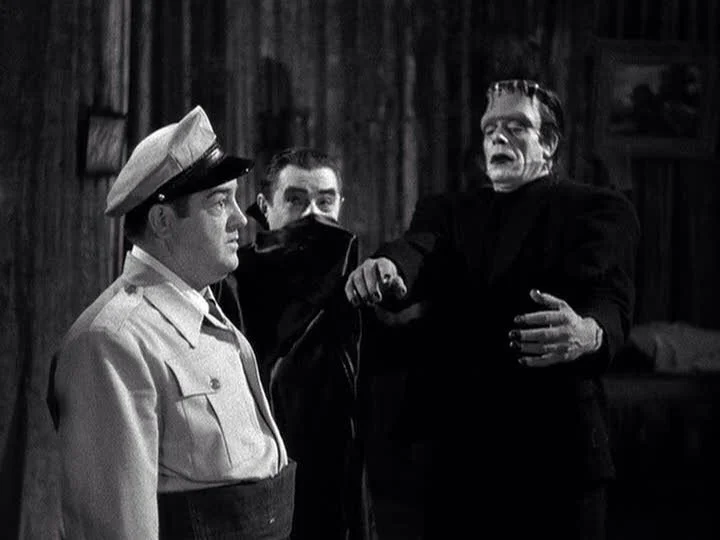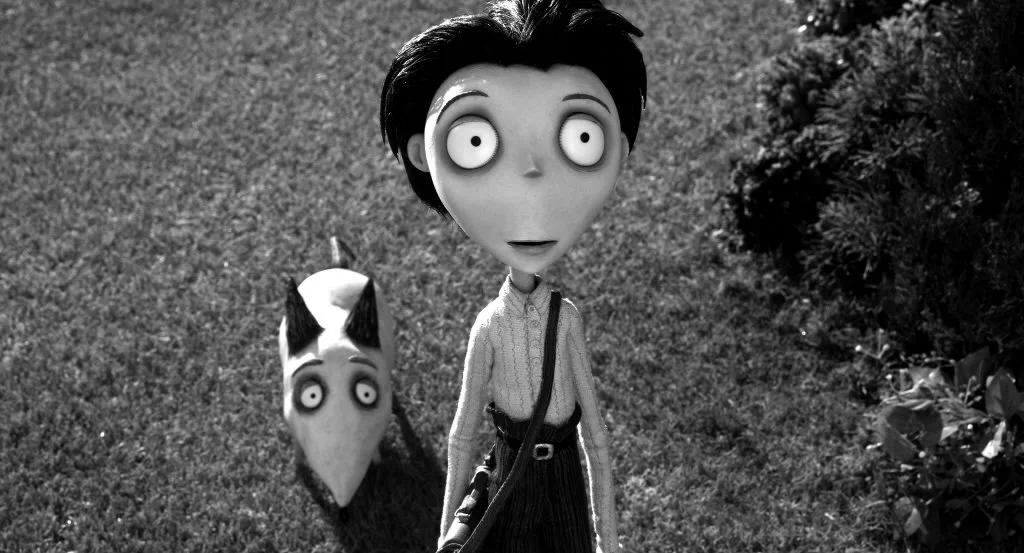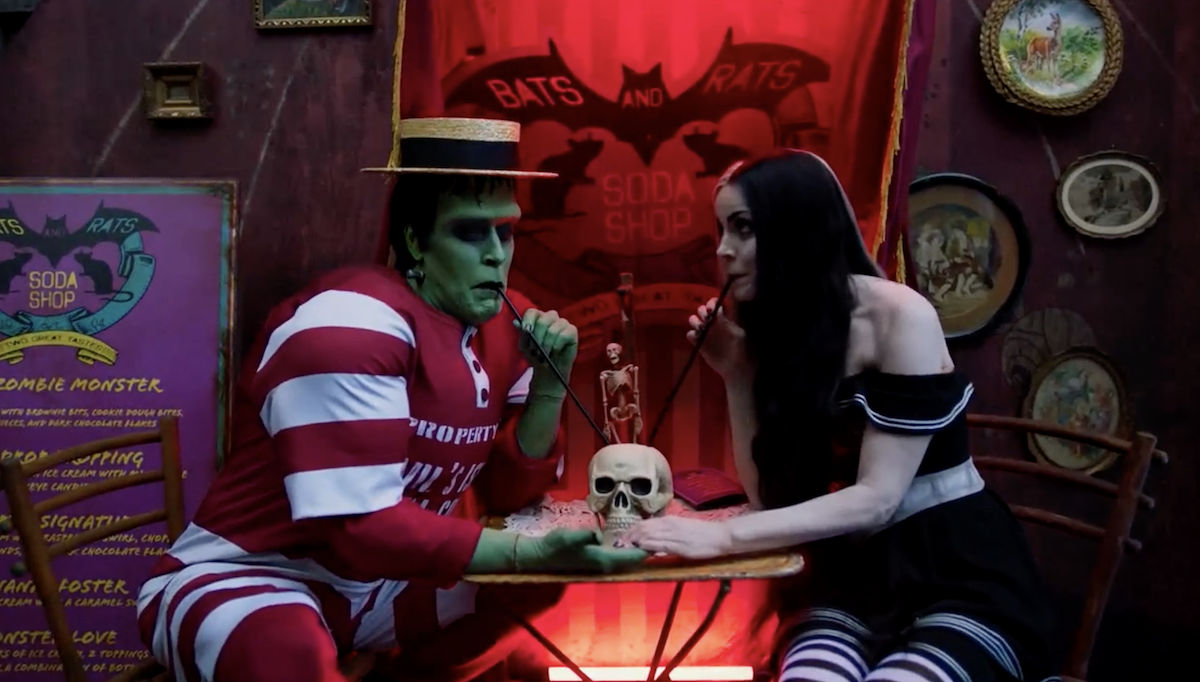How to Start Watching: Frankenstein Flicks
Welcome back, ghouls and ghosts, to the third annual installment of SpookyJawn! It’s our horror takeover of MovieJawn, and this year we are wall to wall with monsters!
by Fiona Underhill, Contributor
It’s hard to overstate the importance and influence of Mary Shelley’s 1818 novel Frankenstein on the literature that came afterwards, and then, as soon as cinema was born, the science fiction and horror movie genres. From James Whale and Universal studios inventing the iconic look, to Terence Fisher and Hammer Horror bringing their own twist with vibrant red blood, Frankenstein’s Monster is a “villain” who has stood the test of time across a century of cinema and counting. Let me take you on a tour of 15 movies traversing every decade – from 1910 to the 2020s (excluding the 1920s) – and show you how Shelley’s mad scientist and his creation have evolved over time.
Frankenstein (dir. J. Searle Dawley, 1910)
It’s now been over 200 years since the publication of Mary Shelley’s Frankenstein, but the first Frankenstein films are almost as old as cinema itself, released less than 100 years after the novel was first conceived at that lake in Geneva. The oldest surviving Frankenstein film is from 1910, and it’s fascinating to see what the creature looked like before Whale’s version became the iconic look which endures to this day. The creation scene in this short film is definitely the most interesting part, with it taking place in a vat behind a door that Frankenstein peeks through to check on the progress. The creature slowly emerges with a skeletal waving arm and long pointed fingers, as the flesh is gradually added to his body.
Frankenstein (dir. James Whale, 1931) and Bride of Frankenstein (dir. James Whale, 1935)
It’s impossible to overstate the importance of Whale’s version of the creature in establishing how he looks in the public imagination. Boris Karloff is the definitive creature, and this film also established Frankenstein himself (his name changed from the novel’s Victor to Henry) as a mad scientist with a hunchback assistant (commonly called Igor in future iterations; here he is named Fritz). Probably the most notable scene is the one in which the creature and a little girl toss flowers into a lake, before the creature tosses the girl in as well. But at least the kitten survives!
While Frankenstein established many of the tropes surrounding the character of the Creature or Monster–as he was usually referred to–Bride is generally agreed to be the better film. It’s high up there as one of the best films of the whole classic Universal Monsters era, although you should prepare yourself for how little screentime the titular Bride herself actually gets. Elsa Lanchester in her dual roles as Mary Shelley plus the Bride does so much with the short amount of time she gets, and the look of the Bride is as iconic as Whale’s design for the creature. The Gothic imagery in this film is far richer than its predecessor, with its use of water and fire, light and shadow, and its German Expressionist angles. The outdoor scenes are maybe even impressive than the indoor ones – with the creature fleeing through a forest of trees or a cemetery superbly constructed and blocked by Whale. One of the most delightful scenes involves Pretorius’ creation of little people in jars – including a devil and a mermaid. This film also features one of the most important aspects of the novel: Frankenstein’s encounter with the blind man. An absolute masterpiece, but it will leave you longing for more Bride! Both films available on Peacock!
Abbott and Costello Meet Frankenstein (dir. Charles Barton and Walter Lantz, 1948)
The ‘40s may have been one of the best-ever movie decades thanks to film noir, but it isn’t really known for its horror movies. It’s something of a no man’s land between the classic Universal Monster era and the UK’s Hammer Horror classics. This comedic take on the Universal monsters is the best you’re going to get out of the decade if you’re looking for Frankenstein flicks. The title is somewhat ironic – given that both Dracula (Bela Lugosi) and the Wolf Man (Lon Chaney Jr) are far more memorable in this film that the poor Monster (Glenn Strange). Chaney Jr. is especially good here, which shouldn’t come as a surprise. Available on Prime Video.
The Curse of Frankenstein (dir. Terence Fisher, 1957)
From the late ‘50s to the mid-70s, London’s Hammer Film Productions was the preeminent home of horror movies, especially surrounding the classic characters of Frankenstein’s Monster, Dracula, and The Mummy. Peter Cushing’s extremely dashing Baron Frankenstein has become indelible, though Christopher Lee’s Creature was not as iconic as his Dracula, of course. The use of vivid color–especially the shocking red blood–was a huge leap forward in the genre, giving us the first gory horror films. Lee’s Creature has the pale green sickly pallor that you can imagine a real revived corpse having, with the off-putting ugliness ramped up from Karloff’s version. Frankenstein is less sympathetic here, as he should be, thanks to his affair with his maid Justine and arranging her murder – all under the nose of the saintly Elizabeth. Kudos to any film that reveals Frankenstein to be the true source of evil, and, crucially, as downright annoyingly insufferable as he is in Shelley’s novel. Available to rent on VOD.
Frankenstein Must Be Destroyed (dir. Terence Fisher, 1969)
Of the three ‘60s Hammer Horror Frankenstein sequels, 1967’s Frankenstein Created Woman is probably the best-known and most celebrated, but, unfortunately, it’s currently unavailable on VOD/streaming. Cushing’s Frankenstein is not a consistent character across the sequels, and each one is pretty much standalone with no continuity between them. In Frankenstein Must Be Destroyed, Victor has gone full evil Machiavellian villain, blackmailing a young couple to do his evil bidding. To really hammer (sorry) home how evil Frankenstein is, there is even a rape scene in this one. Veronica Carlson’s very late-60s version of Victorian costuming is a highlight, as well as Simon Ward’s very Beatles-esque blonde mop of hair. Cushing is, of course, as good as ever. Available to rent on VOD.
Young Frankenstein (dir. Mel Brooks, 1974)
Gene Wilder and Mel Brooks cemented many of the Frankenstein tropes even further with their comedic parody movie, now considered just as much of a classic as the ‘30s movies. Wilder gives a typically sublime performance as a descendant of Baron Frankenstein – sorry Fronkensteen – and the support from Teri Garr, Madeline Kahn, and Marty Feldman really makes the film as special as it is. Feldman’s Igor is such a highlight; you will be longing for him to have more scenes. Wilder’s Frankenstein and Peter Boyle’s Creature tap-dancing to “Putting on the Ritz” is truly unforgettable, and the twist of Elizabeth choosing the Creature over his creator is just delicious. Available on Max.
Re-Animator (dir. Stuart Gordon, 1985)
It may be H.P. Lovecraft who gets a writing credit here and not Mary Shelley, but this film is clearly a twist on the Frankenstein story. It even begins in Switzerland, before changing settings to Lovecraft’s Miskatonic University in Arkham. Re-Animator features one of the best horror performances ever from Jeffrey Coombs as the young mad scientist Herbert West. Bruce Abbott and Barbara Crampton play the good-looking young couple who are swept up in his evil schemes. Like many of the best ‘80s horror movies, Re-Animator features astonishingly good practical effects and insane levels of gore. There’s also plenty of sex and campy comedy, everything you could want from a horror movie really. If you’re looking for something in a similar vein, 1990’s Frankenhooker features a wonderfully outrageous scene of a hotel room full of sex workers exploding into pieces that needs to be seen to be believed (and enjoyed). Re-Animator is available on Tubi, Kanopy, Shudder and more. Frankenhooker is available on Peacock, Tubi, Shudder and more.
Gothic (dir. Ken Russell, 1986)
Mary Shelley movies are an interesting off-shoot of the Frankenstein movie and one worth delving into. From 1986-1988, three movies were released that focused on the infamous summer in Lake Geneva when Lord Byron, Percy Shelley, Doctor Polidori and Mary challenged one another to write the most frightening ghost stories. The best of the three is Ken Russell’s Gothic, as it brings plenty of nightmarish and horrific imagery rather than simply re-telling the events as a biopic would. It stars Natasha Richardson, Gabriel Byrne, Julian Sands, and Timothy Spall and centers around a séance giving birth to all sorts of dark creatures in the villa, including a vampire. Like many works about Mary Shelley, it draws direct lines between her frequent miscarriages and the deaths of her children to her desire to bring the dead back to life in what would become Frankenstein. The 2017 film Mary Shelley starring Elle Fanning is also definitely worth watching, even if it doesn’t have the horror movie spectacle of Ken Russell’s work. Gothic is available on Vudu, Tubi and Plex.
Mary Shelley’s Frankenstein (dir. Kenneth Branagh, 1994)
This ‘90s Frankenstein movie is known for being one of the most faithful adaptations of Mary Shelley’s novel, hence her name being in the title. Robert De Niro, of all people, plays the creature, and, unsurprisingly, gives an incredibly sympathetic performance of this most heartbreaking of “monsters.” Branagh, as creator of the movie, is also a perfect Victor Frankenstein, as his depiction is full of ego, hubris, folly, and melodrama of this self-centered and endlessly whiny character (was Victor based on Byron? I guess we’ll never know). This version bookends the story with the Arctic scenes, which are a welcome addition, as is Aidan Quinn as Captain Walton. This film will unfortunately be known for Branagh betraying Emma Thompson with Helena Bonham-Carter, but it’s an essential Frankenstein film, which adds a lot of context for the Universal and Hammer versions. It’s also supremely ‘90s and Branagh sports an amazing mullet. Available on VOD.
Gods and Monsters (dir. Bill Condon, 1998)
This biopic focuses on the director James Whale (Ian McKellen) during the time shortly before his death in 1957 and his uneasy friendship with his gardener Clayton Boone (Brendan Fraser). While many have interpreted Whale’s 1930s Frankenstein movies as gay allegories due to Whale’s homosexuality, Gods and Monsters draws a much clearer line between his WWI experiences and his horror films. It makes a surprisingly good companion piece to 2019’s Tolkien. Whale and Tolkien grew up close to one another in the English midlands and both used the First World War to inform their work in the science fiction and fantasy genres. Whale was embarrassed by his horror pictures and wanted to distance himself from them, but he also seemed to have a great affection and affinity for his creature, not unlike Victor Frankenstein himself. Available on Paramount+
Van Helsing (dir. Stephen Sommers, 2004)
The early 2000s brought three supernatural horror films close together: League of Extraordinary Gentlemen and Underworld (both 2003) followed by 2004’s Van Helsing, which featured vampires, werewolves, Jekyll and Hyde, Dorian Gray, the Invisible Man and other Gothic characters. Van Helsing is the only one of the three to feature Victor Frankenstein and his Monster, and despite its poor reputation, is actually really fun. Hugh Jackman plays Van Helsing, and he encounters Mr. Hyde at the start of the film before traveling to Transylvania, which is the site of both Frankenstein and Dracula’s castles. Samuel West is very good casting as Victor–he unfortunately doesn’t get much screentime–and Shuler Hensley is a really great monster, complete with a transparent brain that glows with green electricity. He doesn’t get too much time either, but Hensley still manages to bring the heartbreaking humanity that is essential to any good depiction of the creature. Available to rent on VOD.
National Theatre Live: Frankenstein (dir. Danny Boyle, 2011)
The genius behind this theatrical production is in blurring the lines between the creator and creation even further than had happened in previous iterations by having Benedict Cumberbatch and Jonny Lee Miller alternating the roles each night. It’s hard to decide which is the better version, but Cumberbatch’s creature has the edge for me. This adaptation made some controversial decisions surrounding the character of Elizabeth (Naomie Harris) which further complicates the notion of viewing the Monster as wholly good and sympathetic and Victor as evil and deserving of his fate. The first half of this play really centers the Monster, and we barely see Victor, although he does have more to do in the second half. Cumberbatch squirming to life in the extended creation scene at the start is a sight to behold. On the whole, this is one of the best adaptations of the novel, which works really well on a theatrical stage, aided by brilliant music by Underworld. Available to rent on the National Theatre at Home website.
Frankenweenie (dir. Tim Burton, 2012)
Tim Burton returned to his short film from 1984, turning it into a feature-length stop-motion animated movie in 2012. Set in a 1960s suburbia that we’ve seen in the likes of Edward Scissorhands, this version’s Victor Frankenstein is a middle school kid who resurrects his bull terrier Sparky. Victor is embroiled in a rivalry with his classmates over the school science fair, and his experiments and inventions spiral out of control. The change of setting from early 19th century Europe to ‘60s Americana works surprisingly well, and, of course, this film slots so well into Burton’s oeuvre – especially with Ed Wood and Edward Scissorhands. Available on Disney+
Penny Dreadful (dir. John Logan, 2014-2016)
Straying away from flicks to television–if you’ll allow me–I cannot let this opportunity go by without mentioning the best ever depiction of the creature: Rory Kinnear’s performance in the TV series Penny Dreadful. Billie Piper as the Bride and Harry Treadaway as Victor Frankenstein are both also absolutely phenomenal in their roles, but Kinnear’s creature is utterly heart-wrenching. He is given the name Caliban before choosing to call himself John Clare after the English poet, and he kills Victor’s second creation Proteus. Few movie versions really get into properly gut-wrenching side of the Monster which is that after he becomes educated, articulate, and self-aware, he fully understands the abandonment, rejection and isolation of his predicament. The nature of television is that character arcs are much longer and far more in-depth and seeing the creature’s relationships with characters such as Vanessa Ives (Eva Green) is highly rewarding. Available on Showtime and Paramount+
The Munsters (dir. Rob Zombie, 2022)
2014-2015 brought us I, Frankenstein starring Aaron Eckhart and Bill Nighy, Victor Frankenstein starring Daniel Radcliffe and James McAvoy, and Bernard Rose’s Frankenstein starring Danny Huston, Carrie-Ann Moss and Xavier Samuel. Since then, we’ve seen very little of the Monster in movies. Rob Zombie’s Munsters movie revisits the family from the ‘60s sitcom which aired alongside The Addam’s Family but was at least as good, if not better. Many people vehemently hated Zombie’s camp and colorful take on Herman Munster and his family, but it’s worth it for the production design and costume design alone. You can feel Zombie’s passion for the characters seeping out of the whole thing, and it’s a real love-letter to the original series as well as the classic Universal Monster era. It feels like a miracle that this was made at all in 2022, and you can just watch it on Netflix whenever you want.
















